|
Covent Garden: market scenes and street performers
Photos around the south London market town
(Photos ©urban75, September 2010)
Once a thriving central London fruit, vegetable and flower market, Covent Garden is now a major retail tourist attraction, offering cafes, pubs, restaurants, small shops and a craft market.
Starting life as a small, open air fruit and vegetable market on the south side of the fashionable square around 1654, the area quickly grew in popularity, attracting taverns, theatres, coffee-houses, prostitutes and ne'er do wells.
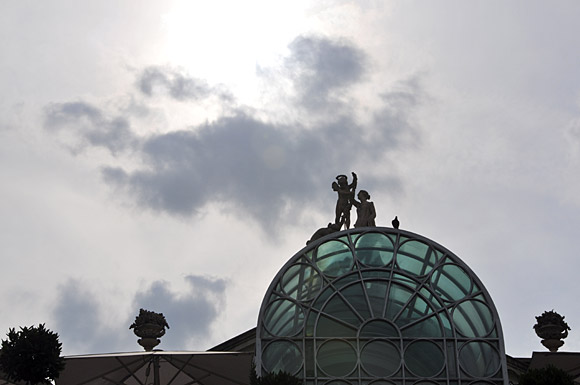
As the area plunged downmarket, the gentry deserted Covent Garden to be replaced by rakes, wits and playwrights. Come the 18th century, the area had become a well-known red-light district, attracting notable prostitutes such as Betty Careless and Jane Douglas and Harris's List of Covent Garden Ladies, a guidebook to the prostitutes and whore houses, became a best seller.
An act of parliament was drawn up to control the area, with the neo-classical market building (above) being erected in 1830 as part of the clean up operation..
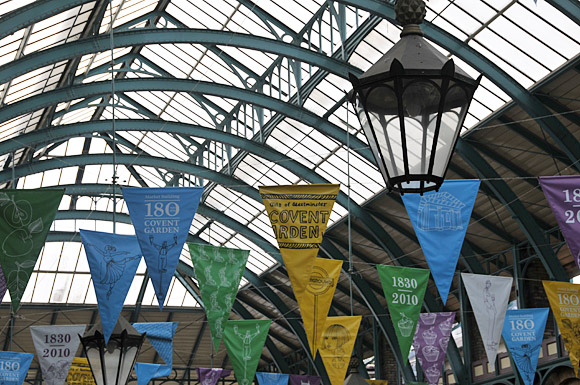
Inside the market building.
Rising traffic levels in the 1960s made the market unsustainable, prompting developers to dredge up some truly horrendous plans to redevelop the site.
After a sustained campaign by the Covent Garden Community Association, in 1973 the Home Secretary, Robert Carr, gave dozens of buildings around the square listed building status, preventing redevelopment.
The working market then moved to a new site (called the New Covent Garden Market at Nine Elms), with the the square finally re-opening as a shopping centre and tourist attraction in 1980.
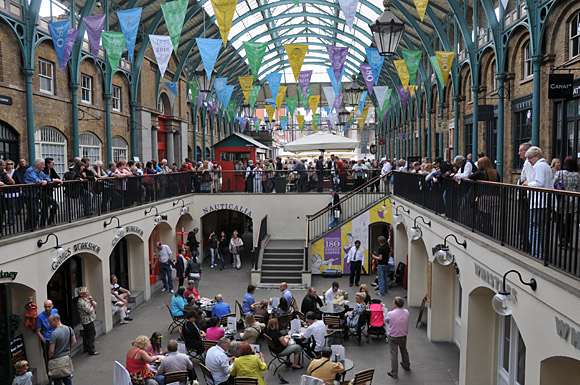
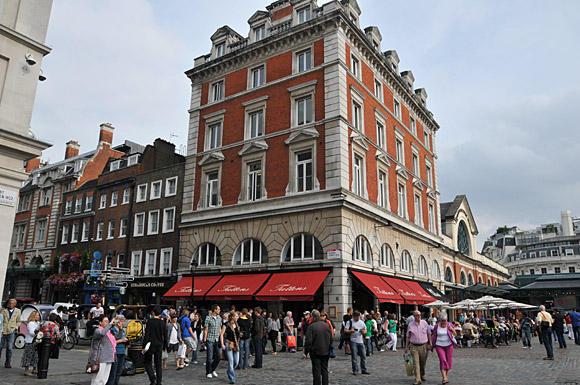
There's some striking buildings surrounding the square.
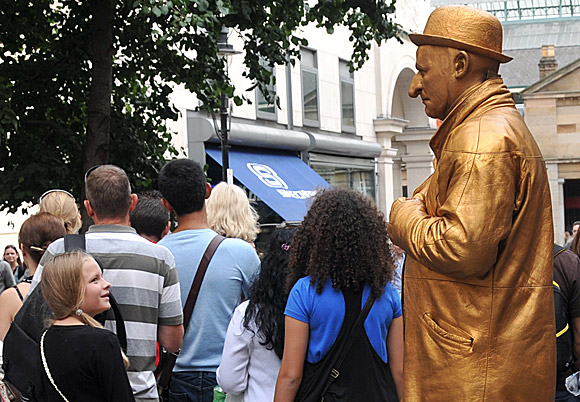
Their popularity remains a mystery to me,
but the approach to the market is lined with these 'human statues,' along with other street performers.,
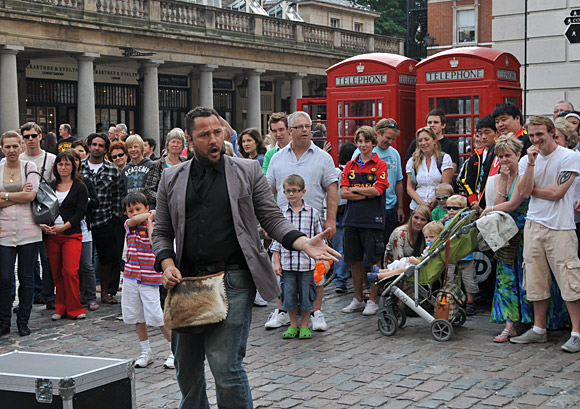
The golden bloke had a hard job competing with this guy, who put on a much more dynamic show
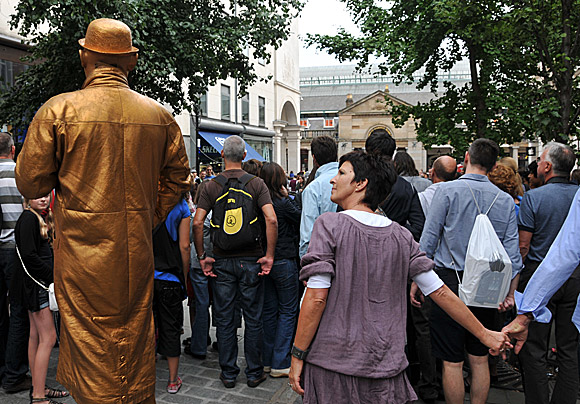
In the end, I began to feel a bit sorry for Goldie, as almost everyone ignored him as they gathered around to watch the shouty bloke.

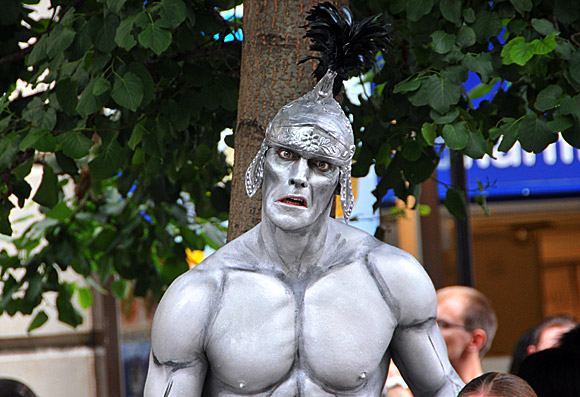
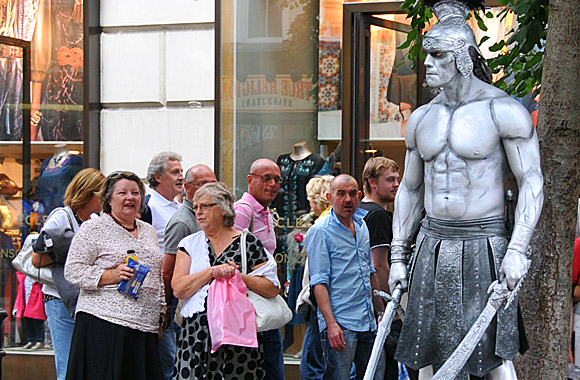
Old ladies and some sort of silver Centurion type.
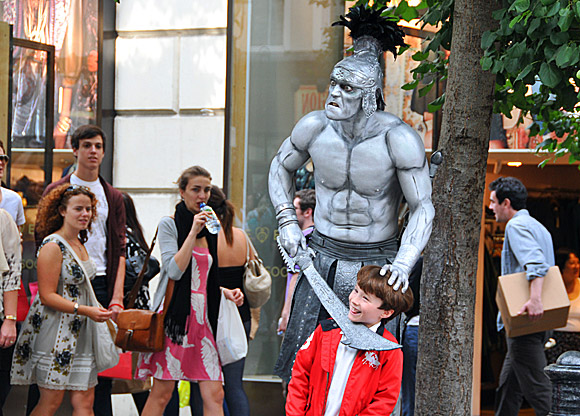
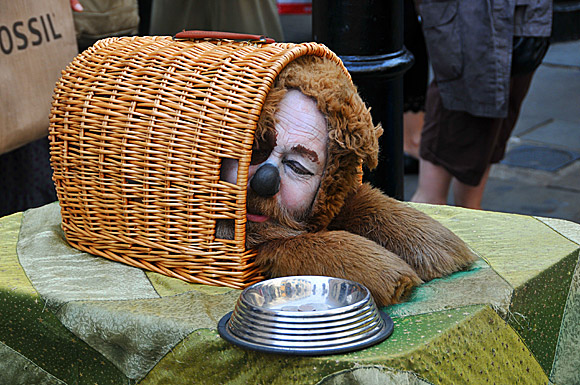
Now this one was just plain creepy.
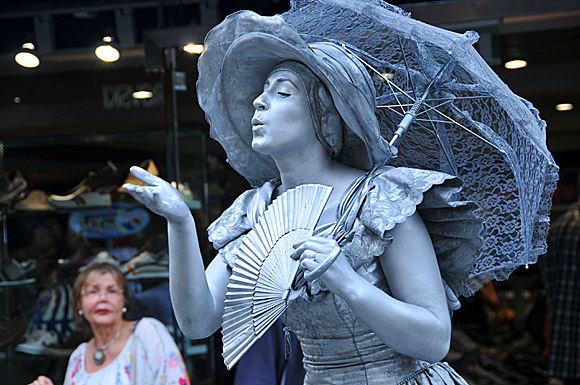

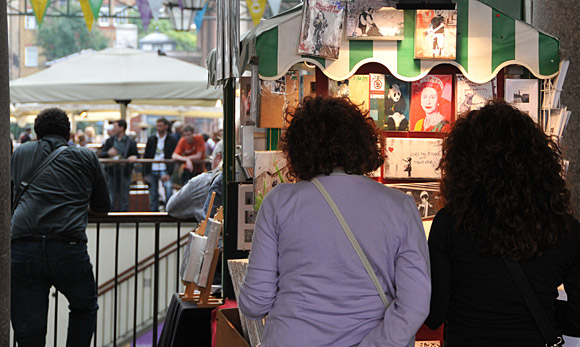
Shopping inside the market.

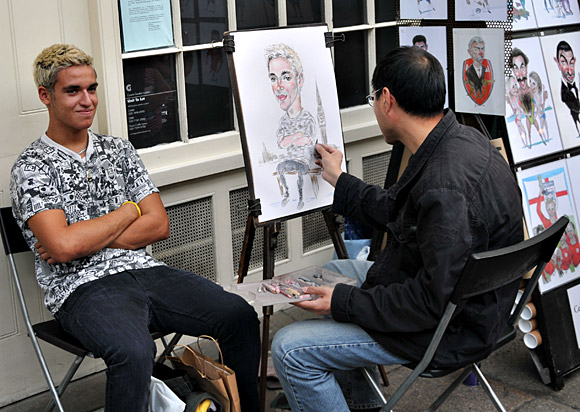
Here's another of London's mysteries. Why do people pay good money to get these awful portraits done?
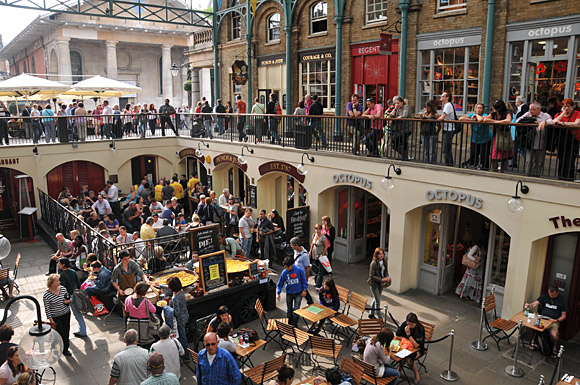
Inside the old market building.
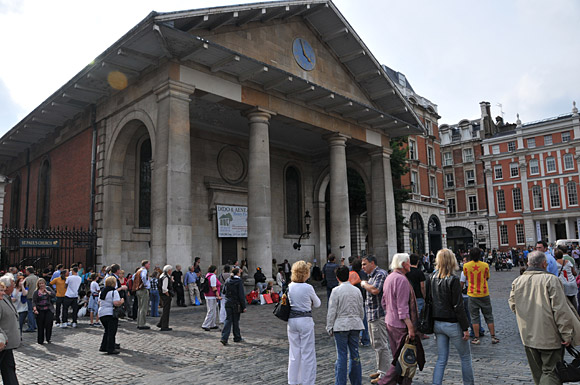
The stunning facade of St Paul's, Covent Garden, designed by Inigo Jones as part of a commission by Francis Russell, 4th Earl of Bedford in 1631.
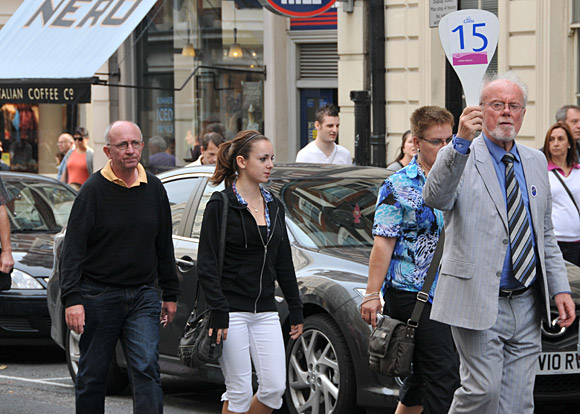
Tourist guide leads the way.

«back to London homepage
|

